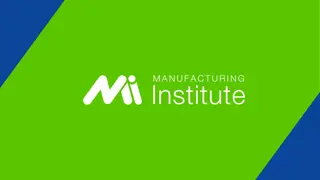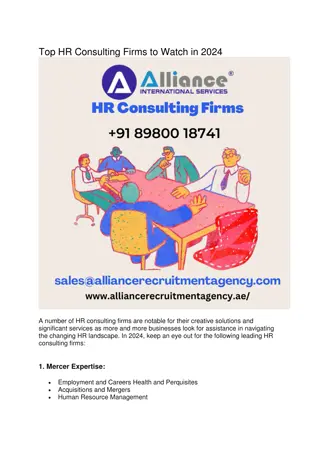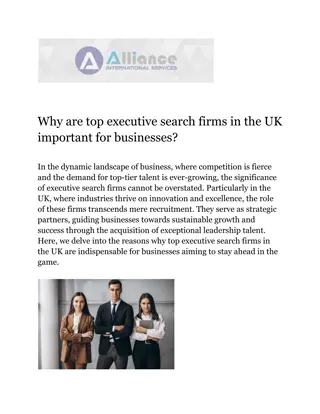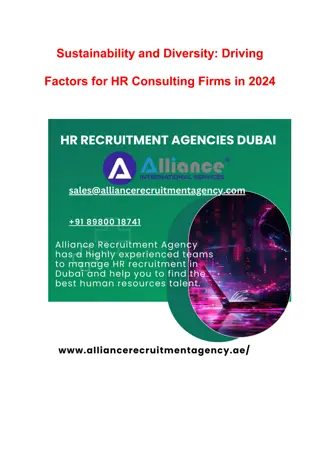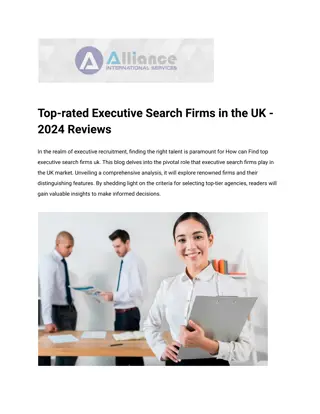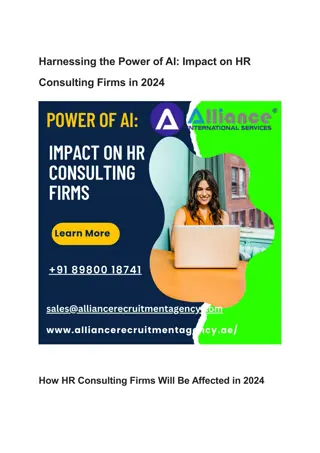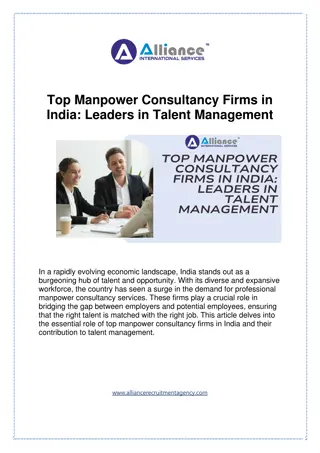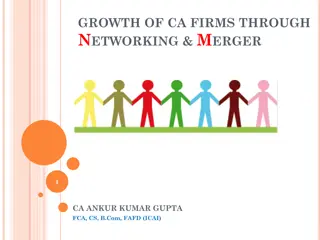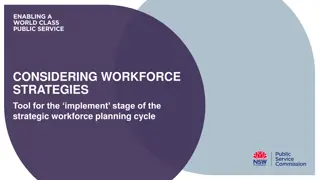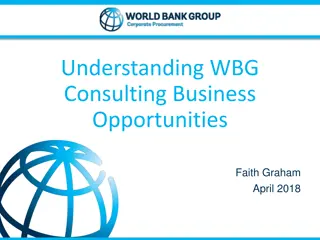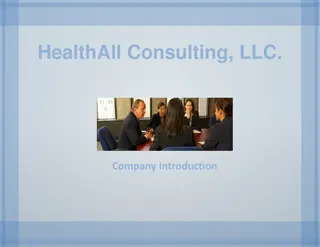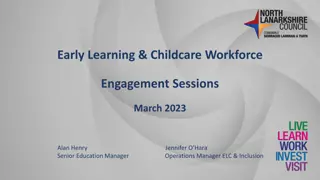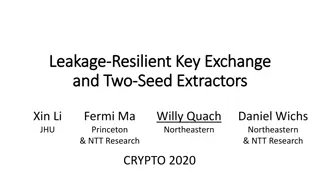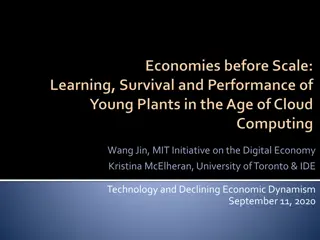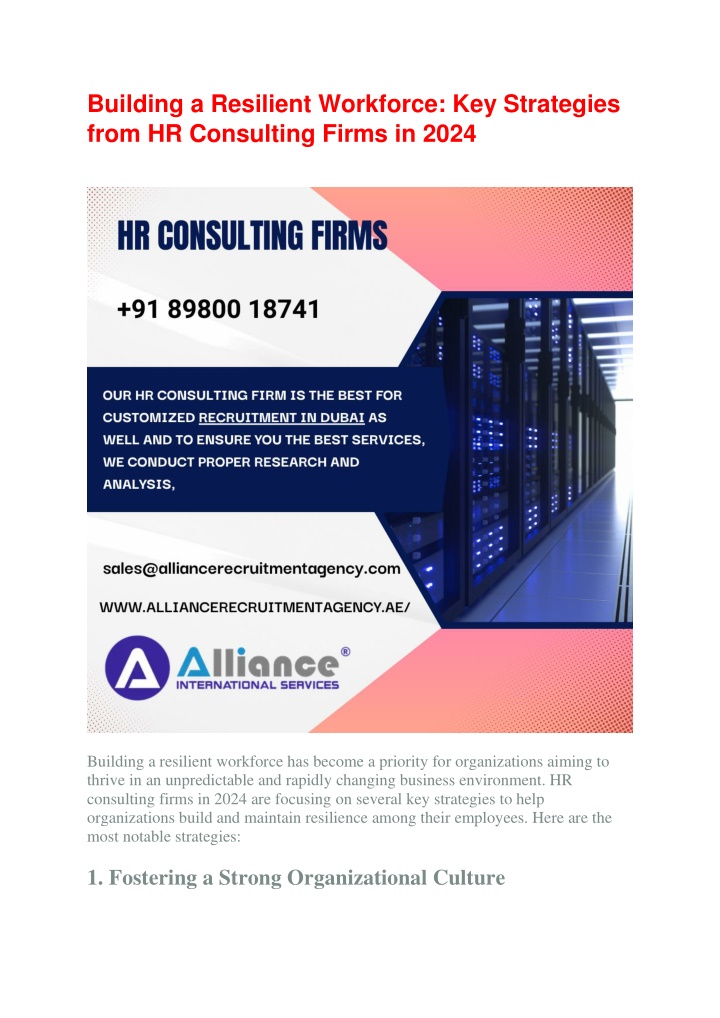
Building a Resilient Workforce Key Strategies from HR Consulting Firms in 2024
Building a Resilient Workforce: Key Strategiesnfrom HR Consulting Firms in 2024nBuilding a resilient workforce has become a priority for organizations aiming tonthrive in an unpredictable and rapidly changing business environment. HRnconsulting firms in 2024 are focusing on several key strategies to helpnorganizations build and maintain resilience among their employees.
Uploaded on | 2 Views
Download Presentation

Please find below an Image/Link to download the presentation.
The content on the website is provided AS IS for your information and personal use only. It may not be sold, licensed, or shared on other websites without obtaining consent from the author. If you encounter any issues during the download, it is possible that the publisher has removed the file from their server.
You are allowed to download the files provided on this website for personal or commercial use, subject to the condition that they are used lawfully. All files are the property of their respective owners.
The content on the website is provided AS IS for your information and personal use only. It may not be sold, licensed, or shared on other websites without obtaining consent from the author.
E N D
Presentation Transcript
Building a Resilient Workforce: Key Strategies from HR Consulting Firms in 2024 Building a resilient workforce has become a priority for organizations aiming to thrive in an unpredictable and rapidly changing business environment. HR consulting firms in 2024 are focusing on several key strategies to help organizations build and maintain resilience among their employees. Here are the most notable strategies: 1. Fostering a Strong Organizational Culture
Diversity and Inclusion Programs: Implementing programs that promote a diverse and inclusive workplace, which enhances creativity, problem-solving, and resilience. Cultural Competency Training: Providing training to increase awareness and understanding of different cultures and backgrounds within the workforce. Building Trust and Transparency: Open Communication Channels: Encouraging transparent communication between management and employees to build trust and a sense of security. Feedback Mechanisms: Establishing regular feedback loops where employees can share their thoughts and suggestions. 2. Investing in Employee Well-being Mental Health Resources: Offering access to mental health resources such as counseling, stress management workshops, and Employee Assistance Programs (EAPs). Work-Life Balance: Encouraging practices that promote a healthy work-life balance, such as flexible work hours and remote work options. 3. Developing Leadership and Management Resilience Training for Leaders: Offering training programs that equip leaders with skills to manage and lead effectively during crises and change. Mentorship Programs: Establishing mentorship programs where experienced leaders guide and support emerging leaders. Adaptive Leadership: Agile Leadership Models: Promoting leadership models that emphasize agility, flexibility, and the ability to pivot quickly in response to change. Decision-Making Frameworks: Training leaders on effective decision- making frameworks that consider both short-term and long-term impacts. 4. Enhancing Skills and Career Development
Learning and Development Programs: Providing ongoing training and development opportunities to help employees adapt to new technologies and methodologies. Upskilling and Reskilling: Focusing on upskilling and reskilling programs to prepare employees for evolving roles and responsibilities. 5. Implementing Flexible Work Arrangements Flexible Work Policies: Offering flexible work arrangements, including remote work and hybrid models, to accommodate diverse employee needs. Technology Support: Ensuring employees have the necessary technology and support to work effectively from any location. Work Environment Adaptations: Ergonomic Workspaces: Providing guidance and resources to help employees set up ergonomic home workspaces. Collaboration Tools: Utilizing collaboration tools and platforms to facilitate communication and teamwork. 6. Building a Strong Support Network Employee Resource Groups: Creating employee resource groups (ERGs) that provide peer support and foster a sense of community. Buddy Systems: Implementing buddy systems where employees are paired to support each other, especially during onboarding or transitions. Managerial Support: Regular Check-ins: Encouraging managers to have regular check-ins with their team members to provide support and address any concerns. Coaching and Mentoring: Offering coaching and mentoring programs to help employees navigate challenges and develop resilience. 7. Adopting Agile HR Practices Flexible HR Policies: Developing HR policies that are flexible and can quickly adapt to changing circumstances. Agile Recruitment: Implementing agile recruitment processes that can rapidly respond to changing talent needs.
HR Technology: HR Analytics: Using HR analytics to gain insights into workforce trends and make data-driven decisions. Automation: Leveraging automation to streamline HR processes and free up time for strategic initiatives. 8. Fostering Innovation and Creativity Innovation Labs: Setting up innovation labs where employees can work on creative projects and test new ideas. Failure Tolerance: Creating a culture that tolerates failure and encourages learning from mistakes. Collaborative Spaces: Collaborative Tools: Providing tools and platforms that enable collaboration and idea-sharing among employees. Cross-Functional Teams: Encouraging cross-functional teams to work together on projects to bring diverse perspectives and solutions. By implementing these strategies, HR consulting firms are helping organizations build a resilient workforce capable of thriving in a constantly evolving landscape. Resilience is not just about withstanding challenges but also about adapting, growing, and emerging stronger from them. If you want help, consider working with International manpower consultants in Dubai, who can associate you with top-level ability. Ready to take the next step? Contact us today to find the perfect HR Agency in Dubai.

